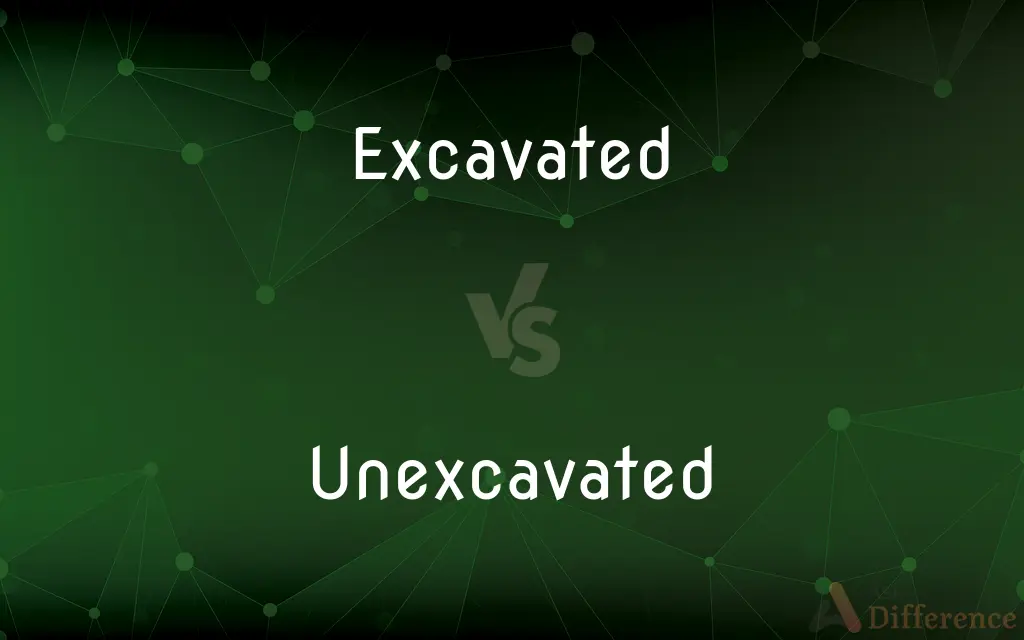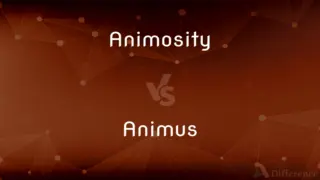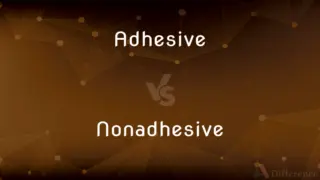Excavated vs. Unexcavated — What's the Difference?
Edited by Tayyaba Rehman — By Maham Liaqat — Updated on March 30, 2024
Excavated areas have been dug up or cleared, revealing what's beneath, while unexcavated areas remain untouched, concealing potential finds.

Difference Between Excavated and Unexcavated
Table of Contents
ADVERTISEMENT
Key Differences
Excavated refers to sites or areas where the ground has been dug up or removed, typically for the purpose of exploration, construction, or archaeological discovery. This process involves removing soil, rock, or other materials to uncover the underlying structures or artifacts, often revealing historical, cultural, or scientific insights. In contrast, unexcavated areas have not been disturbed or explored, leaving the ground in its natural state. Such sites may hold undiscovered information or materials beneath the surface, but they have yet to be explored or analyzed due to various reasons such as lack of resources, environmental concerns, or preservation intentions.
The act of excavating often brings to light hidden structures, fossils, artifacts, or geological layers, providing valuable information about past civilizations, extinct species, or earth's history. This process can be meticulously planned and executed by professionals like archaeologists, geologists, and construction engineers, depending on the purpose of the excavation. Unexcavated sites, however, represent potential rather than realized knowledge. They may be targeted for future exploration or intentionally left undisturbed to preserve the site for future generations or to protect the natural habitat.
Excavated sites can significantly contribute to our understanding of history, culture, and the natural world, often leading to important discoveries that can change existing narratives or theories. They can also involve construction activities where the land is cleared for the development of buildings, roads, or other infrastructure projects. Unexcavated sites, on the other hand, possess a kind of latent value, holding secrets of the past or natural resources that have not yet been uncovered or exploited. These areas can be crucial for preserving biodiversity, cultural heritage, or geological formations.
The decision to excavate or leave an area unexcavated involves considerations of scientific value, cultural significance, environmental impact, and sometimes legal and ethical issues. While excavation can provide immediate benefits through discoveries and developments, the choice to keep an area unexcavated can reflect a long-term perspective on conservation, research potential, and respect for indigenous or historical sites.
Both excavated and unexcavated sites play important roles in our pursuit of knowledge and development. Excavated areas offer a glimpse into the past or facilitate present development, while unexcavated sites hold the promise of future discoveries and the preservation of untouched landscapes. The balance between these two states is crucial in managing our cultural, historical, and natural resources responsibly.
ADVERTISEMENT
Comparison Chart
Definition
Areas where the ground has been dug up
Areas that remain undisturbed
Purpose
Exploration, construction, discovery
Preservation, potential for future exploration
Contributions
Reveals historical, cultural, or geological information
Holds undiscovered information or materials
Considerations
Scientific value, cultural significance
Conservation, research potential, ethical concerns
Impact
Changes narratives, supports development
Preserves biodiversity, cultural heritage
Compare with Definitions
Excavated
Involves removal of earth.
The area was excavated to lay the foundation of the new building.
Unexcavated
May face legal protections.
The area is unexcavated due to legal restrictions on land use.
Excavated
Can alter landscapes.
The land was dramatically changed after it was excavated for minerals.
Unexcavated
Remains untouched.
The unexcavated hill might hide historical artifacts.
Excavated
Revealed by digging.
The excavated site revealed an ancient civilization's ruins.
Unexcavated
Represents latent value.
Unexcavated sites around the ancient city hold untapped archaeological value.
Excavated
Professionally executed.
Archaeologists carefully excavated the burial site.
Unexcavated
Holds potential secrets.
Unexcavated areas in the jungle could be home to undiscovered species.
Excavated
Leads to discoveries.
Excavated fossils provided clues about prehistoric life.
Unexcavated
Chosen for preservation.
The site remains unexcavated to protect its integrity for future research.
Excavated
To make a hole in; hollow out
Excavate an ore-rich hillside.
Unexcavated
Not excavated.
Excavated
To form by hollowing out.
Excavated
To remove by digging or scooping out.
Excavated
To expose or uncover by or as if by digging
Excavate an archaeological site.
Excavated
To engage in digging, hollowing out, or removing.
Excavated
Simple past tense and past participle of excavate
Common Curiosities
Why might an area remain unexcavated?
An area might remain unexcavated due to reasons like preservation efforts, lack of resources, environmental concerns, or legal restrictions.
How do professionals decide whether to excavate an area?
The decision involves considerations of the area's potential scientific value, cultural significance, environmental impact, and sometimes legal and ethical issues.
Are there international laws regarding excavation?
Yes, there are international conventions and laws that govern excavation, especially concerning archaeological sites and cultural heritage.
What impact does excavation have on the environment?
Excavation can alter landscapes, potentially harming local ecosystems, though measures can be taken to minimize environmental impact.
How do excavations contribute to history and science?
Excavations provide direct evidence of past civilizations, environmental conditions, and biological evolution, enriching our understanding of history and science.
What is the purpose of excavation?
The purpose of excavation includes exploring historical or archaeological sites, constructing infrastructure, or geological research.
What role do local communities play in excavation projects?
Local communities can play a significant role, from participating in excavations to being involved in decisions about local heritage and conservation.
How are unexcavated sites protected from illegal activities?
Protection involves legal measures, monitoring, and sometimes physical barriers to prevent looting and unauthorized access.
What happens to artifacts found in excavated sites?
Artifacts are typically cataloged, studied, and sometimes displayed in museums or stored for further research.
Can unexcavated areas be important for research?
Yes, unexcavated areas can be extremely important for future research, holding potential for undiscovered information and materials.
What are some common tools used in excavation?
Tools range from basic hand tools like trowels and brushes for archaeological digs to heavy machinery like excavators for construction.
What challenges do excavators face in urban areas?
Challenges include navigating existing infrastructure, minimizing disruption to local communities, and adhering to strict regulations.
Can new technology affect excavation practices?
Advances in technology, such as remote sensing and ground-penetrating radar, have made excavation more precise and less invasive.
What ethical considerations are involved in excavation?
Ethical considerations include respecting indigenous lands, avoiding destruction of cultural sites, and ensuring findings are shared responsibly.
Can excavation lead to the redevelopment of an area?
Yes, excavation for construction projects often leads to the development of new infrastructure, buildings, or amenities.
Share Your Discovery

Previous Comparison
Animosity vs. Animus
Next Comparison
Adhesive vs. NonadhesiveAuthor Spotlight
Written by
Maham LiaqatEdited by
Tayyaba RehmanTayyaba Rehman is a distinguished writer, currently serving as a primary contributor to askdifference.com. As a researcher in semantics and etymology, Tayyaba's passion for the complexity of languages and their distinctions has found a perfect home on the platform. Tayyaba delves into the intricacies of language, distinguishing between commonly confused words and phrases, thereby providing clarity for readers worldwide.















































